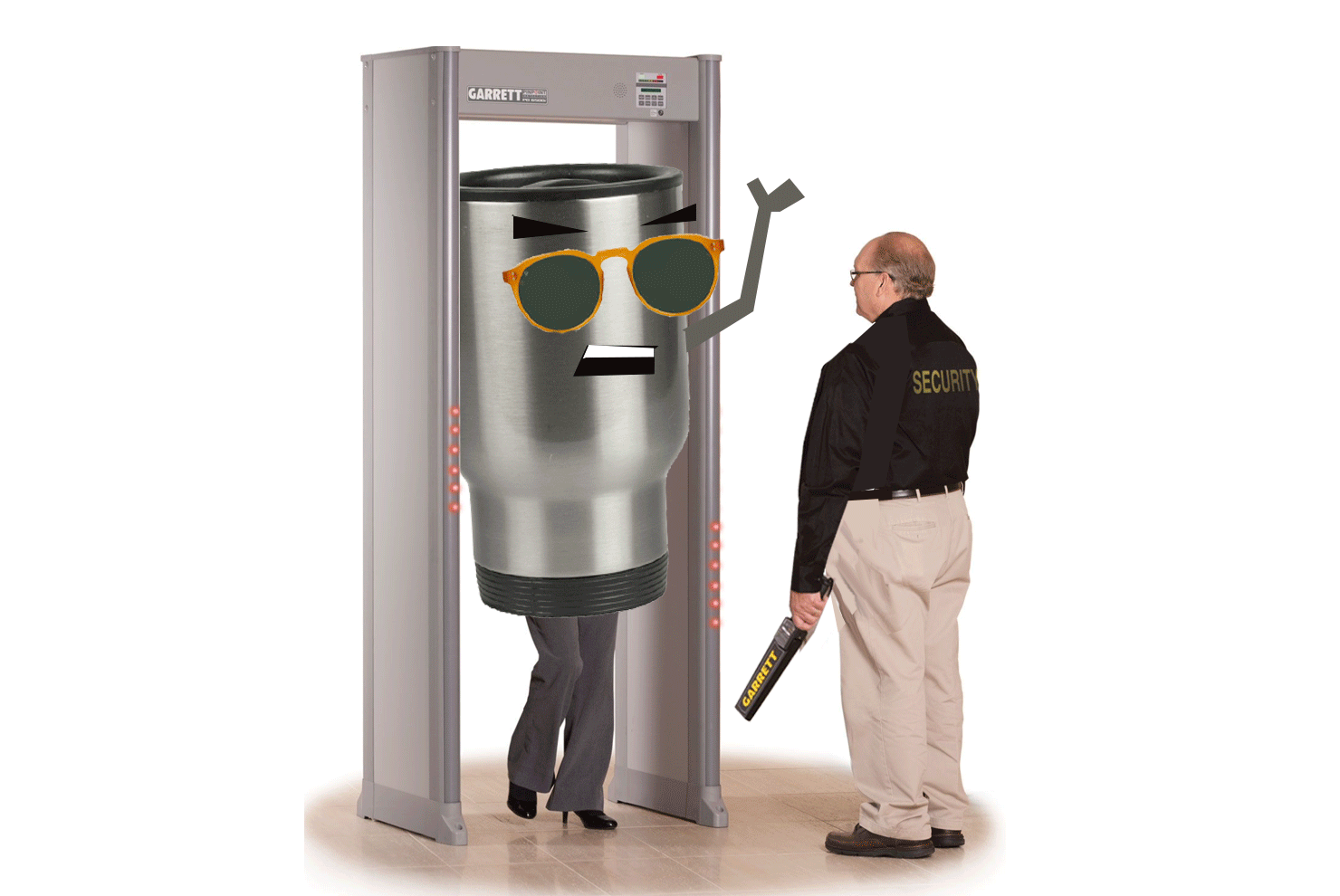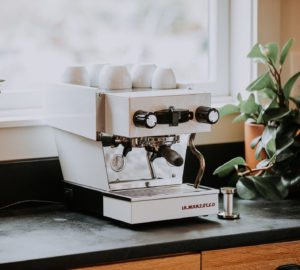Travel mugs are any kind of non-disposable cup or tumbler out of which you can drink a liquid—let’s say coffee—while you are roaming about the world. Many coffee drinkers feel that travel mugs offer significant advantages over a to-go plastic or paper cup because it is reusable, reduces waste, and keeps your drink at the right temperature for longer. For some, it may even offer the frisson of being on-trend on social media. It may have a spillproof, screw-on cap, to let you toss it right into your bag, or it may have a sippy lid that makes it better suited for walking or driving.
A travel mug may be described as thermal, insulated, or vacuum-insulated, meaning it is constructed specifically to keep cold things cold and hot things hot, much like the container for a McDLT, except that failed. As drink containers go, the terms “thermal” and “insulated” are more or less interchangeable—but if temperature control is what you seek, choose a vessel that offers vacuum insulation as one of its attributes.
A “regular” insulated or double-walled mug may simply have a gap between two sets of walls, and will gradually transfer cold to hot coffee, warmth to iced coffee, or heat from your hot coffee to the user’s hand—no thanks! A vacuum-insulated tumbler or mug, on the other hand, is a double-walled vessel which has had the air between the inner and outer walls of the cup removed, leaving nothing within to transfer heat (because, well, there’s nothing there). Over time, your drink will still cool off or heat up inside a vacuum-insulated vessel—but you may be surprised at how long a drink stays warm or cool.

Well, how long does a drink stay warm or cool?
We turned to Anthony Dickson, CEO of popular Seattle-based drinking vessel manufacturer MiiR for the cold facts on drink temperature. Dickson’s hot take is that that cupmakers can’t promise a certain temperature outcome because there isn’t an agreed-upon temperature standard for “hot” or “cold” to begin with, but he does note that the lid is going to be a huge factor in keeping a drink at the temperature you want.
“Your two different types of lid are gonna be sealing lids, something that screws down, or [a lid with] some kind of flip top,” says Dickson. “The thermal properties are intertwined there. If your lid truly seals, the thermal property of your vessel is going to be significantly higher than one that just has a little slider that’s meant more for carrying around,” he continues. “Hot air rises, and it’s going to find any small hole that you drink out of.”
But if you’re hoping to keep a drink hot for the long haul, what “still hot” means is pretty subjective, says Dickson. He asserts that with a vacuum-insulated vessel, “You can expect to pour a hot cup of coffee into your tumbler at say 6:30 when you leave the house and still have it at a desirable drinakble temperature at the end of the day.”
Whomst do we have to thank for this technology?
Though the vacuum flask—or Thermos—was first invented in 1892 by Scotsman Sir James Dewar, the invention’s glass inner chamber made it less than durable for the portability one would hope for. It was in 1913 when William Stanley Jr. of Brooklyn evolved the invention of a vacuum-lined chamber to be made with steel. Early Stanley bottles were used by WWII fighter pilots to keep coffee warm, by doctors to transport volatile medicines and human organs, and, reportedly, by cattle farmers to transport bull semen for artificial insemination. Today, we have better methods for many of the latter use cases—but we still haven’t found anything that tops a vacuum-insulated steel bottle for keeping coffee hot.
Wow, ok. So what materials are thermal mugs typically made of? Are those materials safe?
The best travel coffee mugs made these days are usually built with a stainless steel body, and may have a cap made from stainless steel or BPA-free plastic. Some of these mugs are enamel or “ceramic-lined” (this definition is a little loose, so research before you buy) and some are lined with copper for additional insulative properties. All of these different materials may have an effect on flavor, and which is right for you will be a matter of personal preference.

Is it more environmentally sustainable to use an insulated/travel mug?
Dickson says that MiiR uses the term “responsible” instead of “sustainable”, because, as he puts it: “The most sustainable mug on the planet is the mug you already own.”
But since they are still in the business of selling mugs, and since you are reading about them, you can consider that each use of a reusable mug can remove 1-3 pieces of paper and plastic (cup, lid, straw, etc.) from the waste/recycling stream. What amount of use your cup gets, and how many times you need to use it to recover the environmental cost of manufacture, will vary on a person to person basis and on the manufacturing practices (whether they are zero-waste, use carbon offsets, and use recycled materials, etc.) of the company whose mug you invest in. Of course, you have to wash it with water, too! A person could stay up all night forever doing the math, amirite? Perhaps just pick a mug that really works for you and do your best.
Are coffee shops even letting you bring your own mugs again since the pandemic?
Yes, most coffee shops around the world have reintroduced the practice of allowing—or encouraging, via discounted prices—personal reusable mugs and tumblers again, now that science has shown surface transmission of COVID to be insignificant.
“It was one of the last things to come back,” says Joe Coffee founder Jonathan Rubinstein, of welcoming reusable mugs back to Joe cafes in the NYC area after myriad COVID restrictions.
“Once they came back, there’s been no issue from staff members feeling uncomfortable,” Rubinstein says. “People are using their own mugs I think as regularly as before because there’s at least as much focus now, if not more, on the saving the planet aspect,” he says.
All this from the power of a nice a reusable mug.
Liz Clayton is the associate editor at Sprudge Media Network. Read more Liz Clayton on Sprudge.































